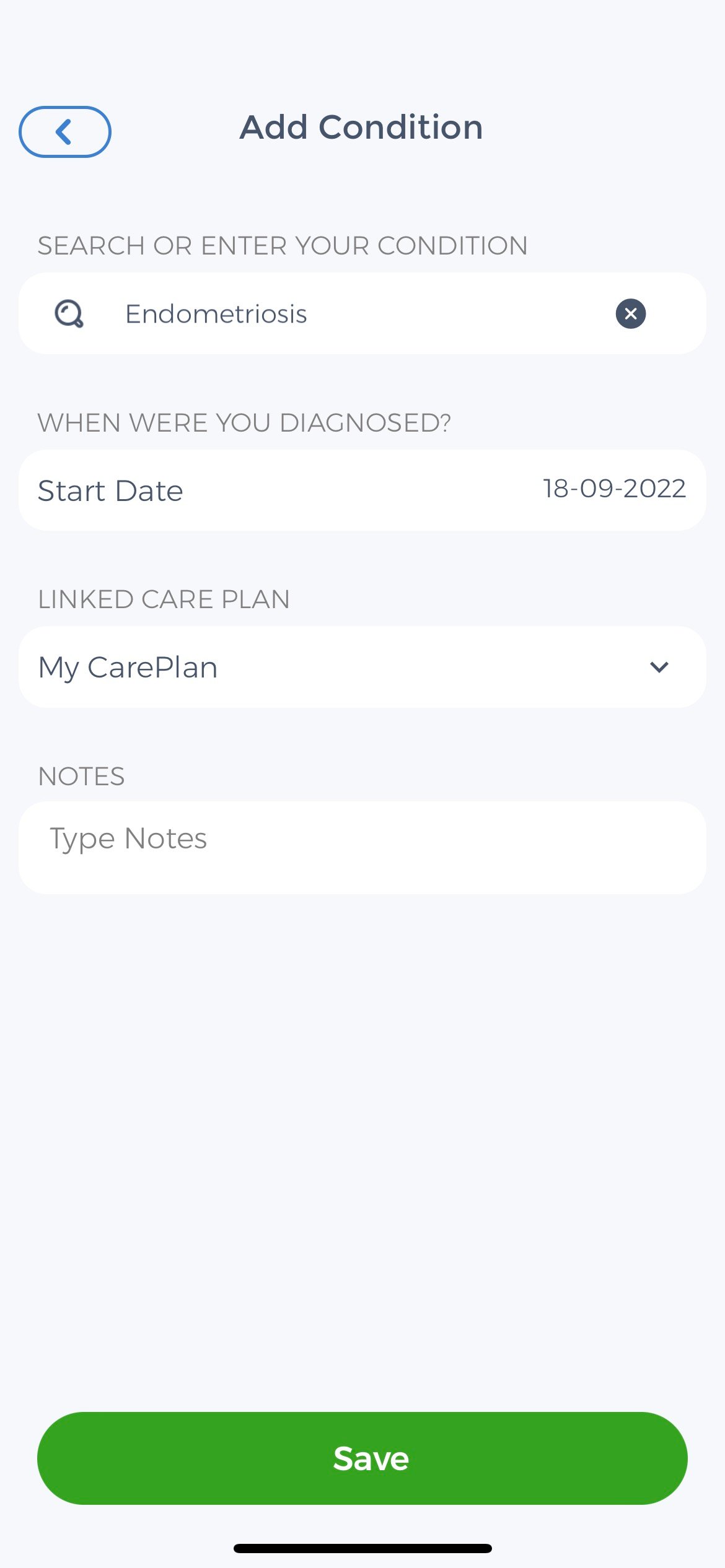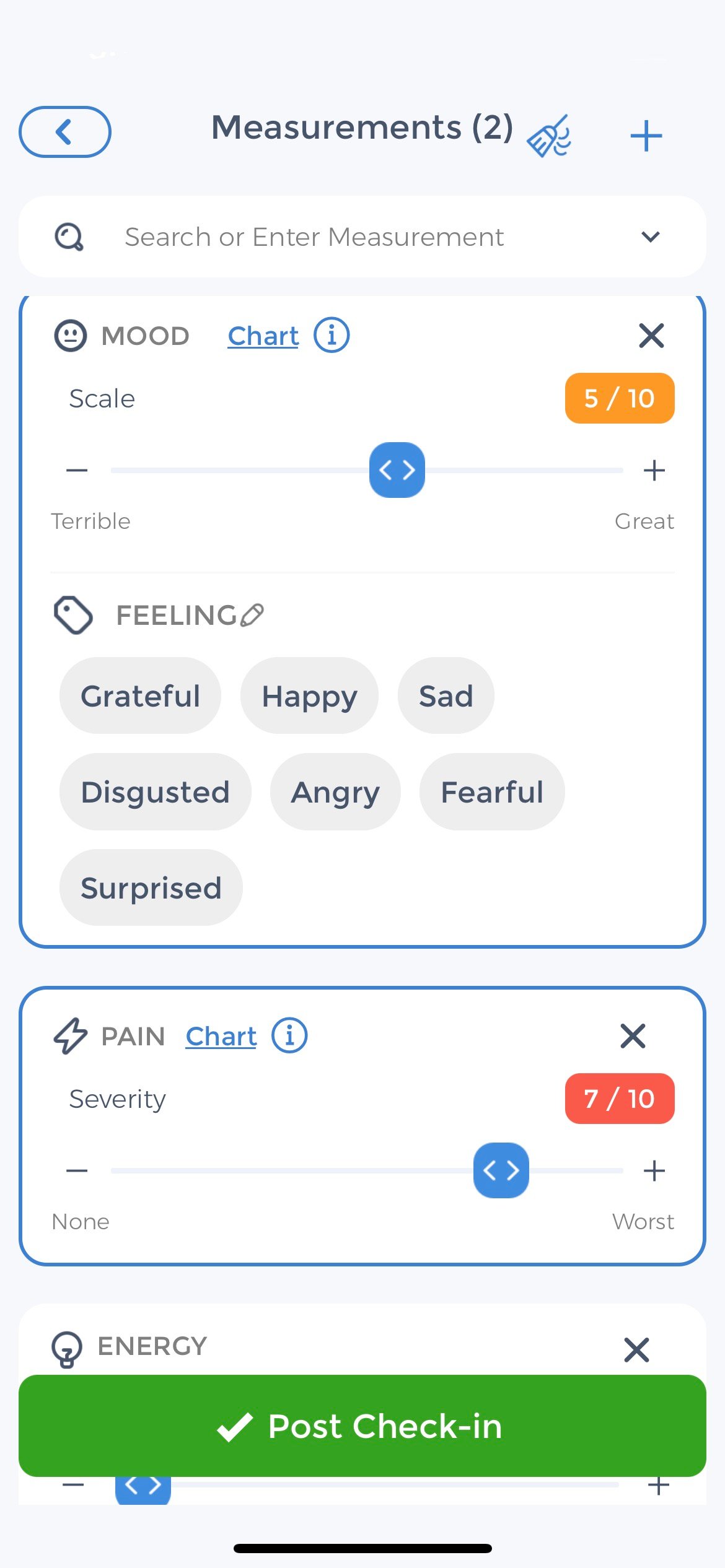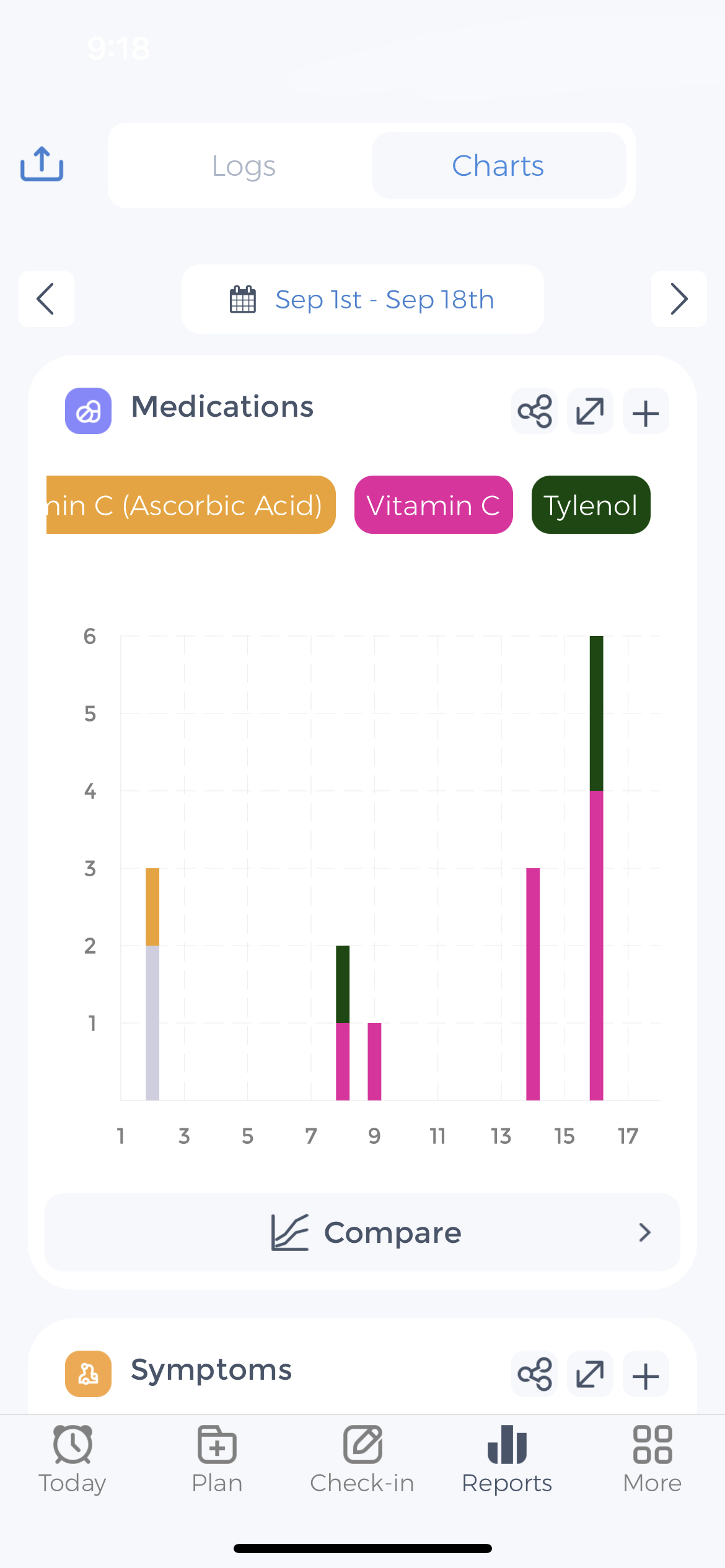
Endometriosis is a chronic, often painful disorder in which the tissue that lines the uterus (the endometrium) grows outside of the uterus. Endometriosis most commonly involves the ovaries, fallopian tubes and the tissue lining the pelvis. Rarely, endometriosis may involve other organs such as the lungs, brain or skin. The endometrium (the tissue that normally lines the inside of your uterus and is shed during your period) starts to grow outside of your uterus. An endometriosis flare up can occur when symptoms spring up due to a variety of different triggers.
There is no cure for endometriosis, but there are treatments that can help lessen the symptoms. If you think you might have endometriosis, talk to your doctor. They may be able to diagnose endometriosis based on your symptoms and a physical exam. They may also order an ultrasound or laparoscopy to confirm the diagnosis.
What are the Symptoms of Endometriosis?
The main symptom of endometriosis is pelvic pain, often associated with your menstrual period. However, endometriosis can also cause other problems, such as:
- Pain during sex
- Painful bowel movements or urination
- Excessive bleeding during your period
- Infertility
- Fatigue
Don’t feel discouraged if you experience any of these symptoms. Endometriosis can be managed, and women with endometriosis lead healthy and fulfilling lives.[1][2]
What causes Endometriosis to flare up?
Several things can trigger endometriosis flare-ups:
- Hormonal changes. Fluctuations in hormone levels during your menstrual cycle may cause endometriosis to flare up.
- Periods. The shedding of the endometrium during your period can irritate or inflame the endometrial tissue outside of your uterus, causing pain and inflammation.
- Surgical procedures. Endometriosis can worsen after certain types of surgeries, such as a hysterectomy (removal of the uterus) or a laparoscopy (a surgery used to diagnose and treat conditions of the reproductive organs).
- Immune system problems. A weakened immune system may allow endometriosis to develop or worsen.
- Obesity. Being overweight or obese may increase your risk of endometriosis.
Endometriosis Flare-up Symptoms
The main symptom of endometriosis is pelvic pain, often associated with your menstrual period. However, endometriosis can also cause pain during sex, when going to the bathroom and while urinating or defecating. In some cases, you may experience no symptoms at all.
An Endometriosis flare feels like a BAD period. The pain is caused by the endometrial tissue outside of the uterus growing and shedding, just like the tissue inside the uterus. This can cause inflammation and irritation, which leads to pain. The flares can be debilitating because the pain is caused by the endometrial tissue outside of the uterus growing and shedding.
Living with these painful episodes affects every part of your daily life. If you want to understand your specific triggers and patterns, you can learn about endo flare management through tracking your symptoms. Getting a handle on what sets off your flares helps you prepare and cope better.
This can cause inflammation and irritation, which leads to pain. The pain can be so severe that it interferes with your daily activities. If you experience any of these symptoms, talk to your doctor.
During Ovulation
Some women with endometriosis experience pain during ovulation. This is because the endometrial tissue outside of the uterus grows and sheds during this time. endometrial tissue is also sensitive to the hormones that are released during ovulation, which can cause pain.
Before Your Period
On the days leading up to their period, many women with endometriosis experience discomfort and other symptoms. This is due to the endometrial tissue outside of the uterus developing and shedding throughout this time. The pain stems from the inflammation and irritation that
During Your Period
Endometriosis can cause heavy bleeding and cramping during your period. This can cause inflammation and irritation, which leads to pain. The pain can be so severe that it interferes with your daily activities. You may also experience fatigue, bloating and other symptoms. If you experience any of these symptoms, talk to your doctor.
After Your Period
Endometriosis can cause pelvic pain, cramping and discomfort after your period. Take common pain relievers like ibuprofen or acetaminophen to help relieve the pain. If the pain is severe, you may need to see your doctor. Also, try to avoid activities that may worsen the pain, such as intercourse.
After an activity such as running or swimming
Pain after these activities may be caused by endometriosis. The pain is caused by the endometrial tissue outside of the uterus growing and shedding. Try to avoid these activities if they trigger your pain. Swimming may help to relieve the pain caused by endometriosis. The water can help to support your body and take some of the pressure off of your joints and muscles. Swimming can also help to relax your body and mind. If you do not have access to a pool, try another low-impact exercise like walking or biking.
Alternative interventions: Acupuncture
Acupuncture is a form of traditional Chinese medicine that involves inserting thin needles into the skin at specific points on the body. Acupuncture has been found to be effective in treating endometriosis-related pain. It is thought to work by stimulating the release of endorphins, which are natural pain-relieving chemicals in the body. Acupuncture may also help to improve blood circulation and reduce inflammation. If you are interested in trying acupuncture, talk to your doctor about finding a qualified practitioner. You can read the study here: https://www.ncbi.nlm.nih.gov/pmc/articles/PMC5659600/[3][4][5][6][7]
What are some lesser-known triggers?
Diet: Some women find that certain foods can trigger endometriosis pain. Common triggers include caffeine, alcohol, processed foods and red meat.
Stress: Stress can worsen endometriosis symptoms because it can disrupt the balance of hormones in your body.
Lack of exercise: Exercise can help reduce endometriosis pain by releasing endorphins, which are natural painkillers.
Smoking: Smoking has been linked to a higher risk of endometriosis because it can damage the lining of the uterus and fallopian tubes.
Exercise: Although exercise is generally good for your health, strenuous exercise can sometimes make endometriosis pain worse.
Foods that cause Endometriosis to flare up
The general guidelines for someone with endometriosis state that you should avoid inflammatory foods. This means staying away from processed foods, red meat, gluten, soy, dairy, sugar, caffeine, and alcohol. Some women find that certain foods can trigger endometriosis pain. Common triggers include:
- Foods that are high in sugar, such as candy, cookies, and cake. Sugar can cause inflammation.
- Foods that are high in saturated fat, such as red meat, cheese and butter. These can make endometriosis pain worse.
- Alcohol
- Caffeine
- Spicy foods, which can irritate the digestive system and make endometriosis pain worse.
What to eat during a flare up:
- Foods that are high in fiber, such as fruits, vegetables and whole grains. This will help to reduce inflammation and pain.
- Foods rich in omega-3 fatty acids, like salmon, tuna, flaxseed and chia seeds help to combat inflammation.
- Probiotic-rich foods, such as yogurt, kefir and sauerkraut. Probiotics can help to improve gut health and reduce inflammation.
- Gluten-free foods, if you are sensitive to gluten.
- Foods that are easy to digest, such as soups, stews and smoothies.
Managing Endometriosis: Triggers & Symptoms

- Pain medications: Nonsteroidal anti-inflammatory drugs (NSAIDs), such as ibuprofen (Advil, Motrin) and naproxen (Aleve) can help relieve endo pain.
- Hormone therapy: birth control pills, patches or shots can help to regulate hormones and reduce endometriosis symptoms.
- Surgery: Laparoscopic surgery can be used to remove endometrial tissue.
- CareClinic App: If you’re struggling to find your endometriosis triggers, the CareClinic app can help. With the app, you can track your symptoms, triggers, and treatments. This can help you to identify patterns and figure out what works for you. The app also has a community of women who are living with endometriosis.
How long do Endo flare up symptoms last?
The duration of an endometriosis flare up can vary from woman to woman. Some women only experience a few days of pain, while others may have pain for weeks or even months. If you are struggling to manage your endometriosis pain, talk to your doctor. Endometriosis is a chronic condition, which unfortunately means that it can flare up at any time.[16]
What should you do during a severe Endometriosis flare up?

– Try to get some rest. This can be difficult, but it is important to give your body a chance to heal.
– Apply heat to the area that is hurting. This can help to relax the muscles and ease the pain.
– Take over-the-counter pain medications, such as ibuprofen or acetaminophen.
– Avoid activities that make the pain worse. This might include sex, exercise, and wearing tight clothing.
– Try to relax and de-stress. Stress can make endometriosis pain worse.
– CareClinic App: The CareClinic app can be a helpful tool during a flare up. You can record your activity and any environmental factor that may have just occurred to find correlations with your pain. You can also share this information with your doctor to help them better understand your condition.
Endometriosis can be a frustrating and painful condition to live with. However, there are ways to manage the pain and symptoms. By understanding your triggers and taking steps to avoid them, you can help to reduce the frequency and severity of endometriosis flare ups.

- Download the app and create an account.
- Select “Add a Health Condition.”
- Choose “Endometriosis” from the list of conditions.
- Add Medications such as ibuprofen or acetaminophen or any other you may be taking
- You will then be able to track your symptoms, triggers, and treatments from the Check-in screen.
- View your treatment logs and charts to monitor your progress over time.
- Share and export data with your doctor or add others as a caregiver in the app.
- Work with your HCP to act on insights by adjusting your treatment.
Some benefits of tracking your condition:
Discover your triggers: By tracking your endometriosis, you can identify any possible triggers for your flares. This might include certain foods, activities, or even environmental factors.
Discover your pain level: By tracking your pain level, you can see if there are any patterns or trends. This might help you to identify what treatments are working for you and when you need to seek medical help.
Monitor your Progress: By tracking your endometriosis over time, you can see if there are any trends in your symptoms. This might help you to identify if your condition is getting better or worse.[17][18]
What is endo belly?
It’s normal to have abdominal pain during your period. But endometriosis pain is often more severe and lasts longer than regular menstrual cramping. The pain may start a few days before your period and last several days into your period. Some women have endometriosis pain all the time.
Endo belly is a term used to describe the build-up of endometrial tissue in the abdomen. This can cause pain, bloating, and cramping. Endo belly can be a symptom of endometriosis. Doctors can perform a laparoscopy to confirm the diagnosis. Treatment for endo belly usually involves surgery to remove the endometrial tissue. However, if you have mild symptoms, your doctor may recommend pain medication or hormone therapy.[19][20][21][22]
Putting it all together
Endometriosis is a chronic condition that can be difficult to manage. However, by understanding your triggers and taking steps to avoid them, you can help to reduce the frequency and severity of endometriosis flare ups. The CareClinic app is designed to help you take control of your condition by tracking your symptoms, triggers, and treatments. By monitoring these areas, you can begin to see patterns emerge and figure out what methods work best for you.
References:
https://www.womenshealth.gov/a-z-topics/endometriosis
https://www.mayoclinic.org/diseases-conditions/endometriosis/symptoms-causes/syc-20352775
https://kidshealth.org/en/parents/endometriosis.html[23]
References
- “Endometriosis”. https://www.who.int/news-room/fact-sheets/detail/endometriosis%E2%81%A0
- “Endometriosis | Johns Hopkins Medicine”. https://www.hopkinsmedicine.org/health/conditions-and-diseases/endometriosis/
- “Endometriosis Flare-Up Symptoms, Triggers, and Tips for Relief”. https://drbrighten.com/endometriosis-flare-up/
- “Efficacy of acupuncture on pelvic pain in patients with endometriosis: study protocol for a randomized, single-blind, multi-center, placebo-controlled trial – PMC”. https://pmc.ncbi.nlm.nih.gov/articles/PMC5992761/
- “Efficacy and safety of acupuncture-related therapies in symptomatic endometriosis: a systematic review and network meta-analysis – PMC”. https://pmc.ncbi.nlm.nih.gov/articles/PMC11920332/
- “Lifestyle Changes | InsightEndometriosis”. https://www.insightendometriosis.org.nz/lifestyle-changes
- “Acupuncture for endometriosis: A systematic review and meta-analysis – PubMed”. https://pubmed.ncbi.nlm.nih.gov/38033648/
- “6 Tips For Eating With Endometriosis”. https://intermountainhealthcare.org/blogs/6-tips-for-eating-with-endometriosis
- “Healthy Eating for Endometriosis”. https://www.healthcentral.com/slideshow/your-guide-for-smart-eating-with-endometriosis
- “Can Diet Improve Symptoms of Endometriosis? | Banner”. https://www.bannerhealth.com/healthcareblog/better-me/the-10-foods-to-eat-and-to-avoid-when-you-have-endometriosis
- “Endometriosis and Diet: Foods to Avoid and Foods to Embrace”. https://www.artfertilityclinics.com/in/en/art-blog/endometriosis-and-diet-foods
- “What To Eat And What To Avoid If You Have Endometriosis”. https://healthmatch.io/endometriosis/what-foods-to-eat-or-avoid-with-endometriosis
- “Diet for Endometriosis Pain Relief – A Guide”. https://www.nirvahealth.com/blog/dietary-strategies-for-relieving-endometriosis-pain
- “Endometriosis Diet: Foods To Eat and What To Avoid”. https://www.health.com/condition/endometriosis/endometriosis-diet
- “What are the treatments for endometriosis? | NICHD – Eunice Kennedy Shriver National Institute of Child Health and Human Development”. https://www.nichd.nih.gov/health/topics/endometri/conditioninfo/treatment
- “Endometriosis Flare Up Symptoms”. https://www.rylonclinic.com/post/endometriosis-flare-up-symptoms
- “7 Effective Endometriosis Self-Care Strategies”. https://docus.ai/symptoms-guide/endometriosis-self-care
- “Living with endometriosis: MedlinePlus Medical Encyclopedia”. https://medlineplus.gov/ency/patientinstructions/000714.htm
- “What is endo belly and how can you manage it? | Spire Healthcare”. https://www.spirehealthcare.com/health-hub/specialties/womens-health/what-is-endo-belly-and-how-can-you-manage-it/
- “Endo Belly: Causes and Treatments for Endometriosis Bloating”. https://drbrighten.com/endo-belly/
- “How To Get Rid of Endo Belly”. https://health.clevelandclinic.org/endo-belly
- “What Is Endo Belly? Experts Explain”. https://www.ccrmivf.com/news-events/prevention-what-is-endo-belly/
- “How to keep an endometriosis pain and symptom diary”. https://www.bupa.co.uk/newsroom/ourviews/endometriosis-pain-diary


